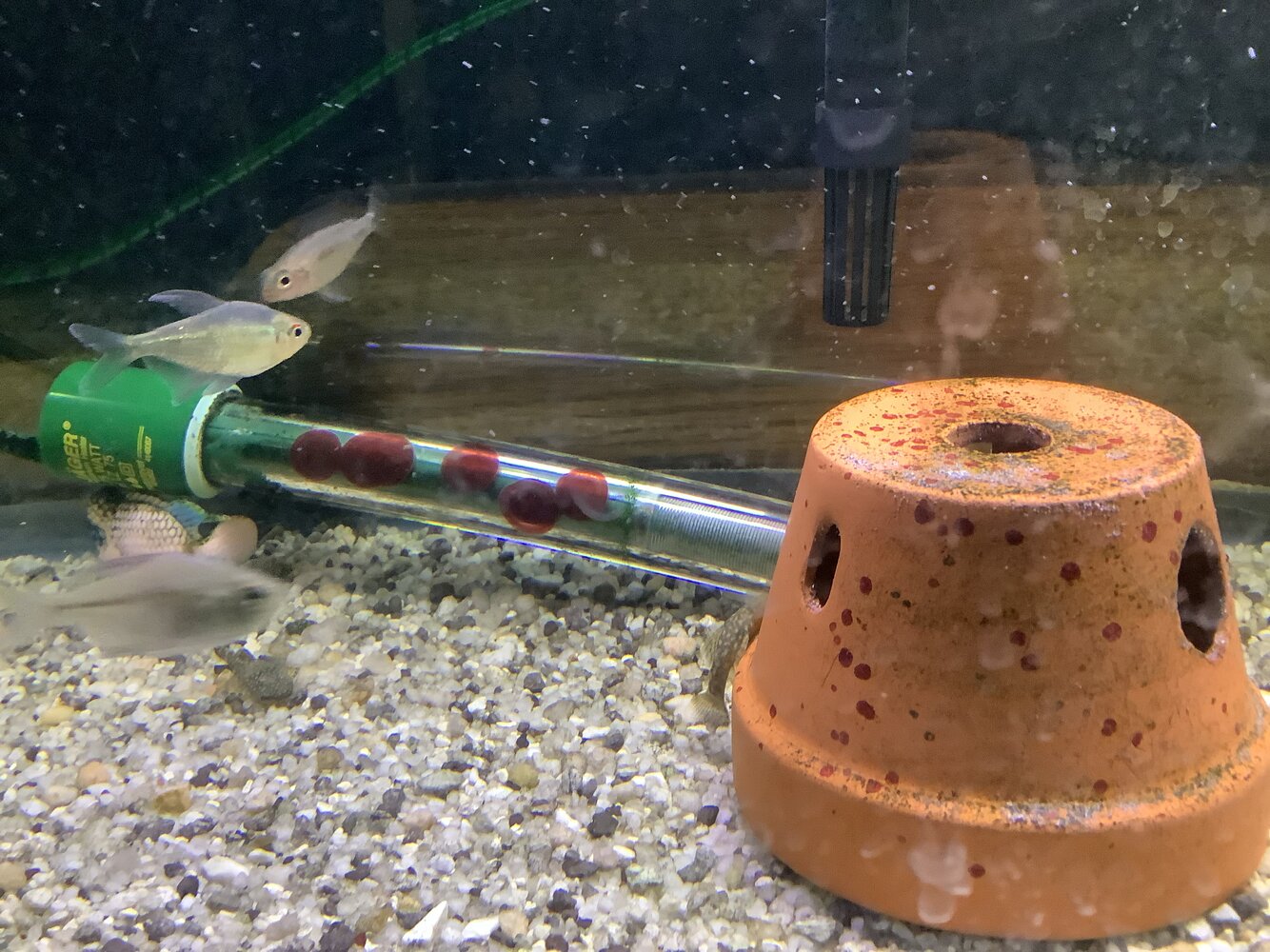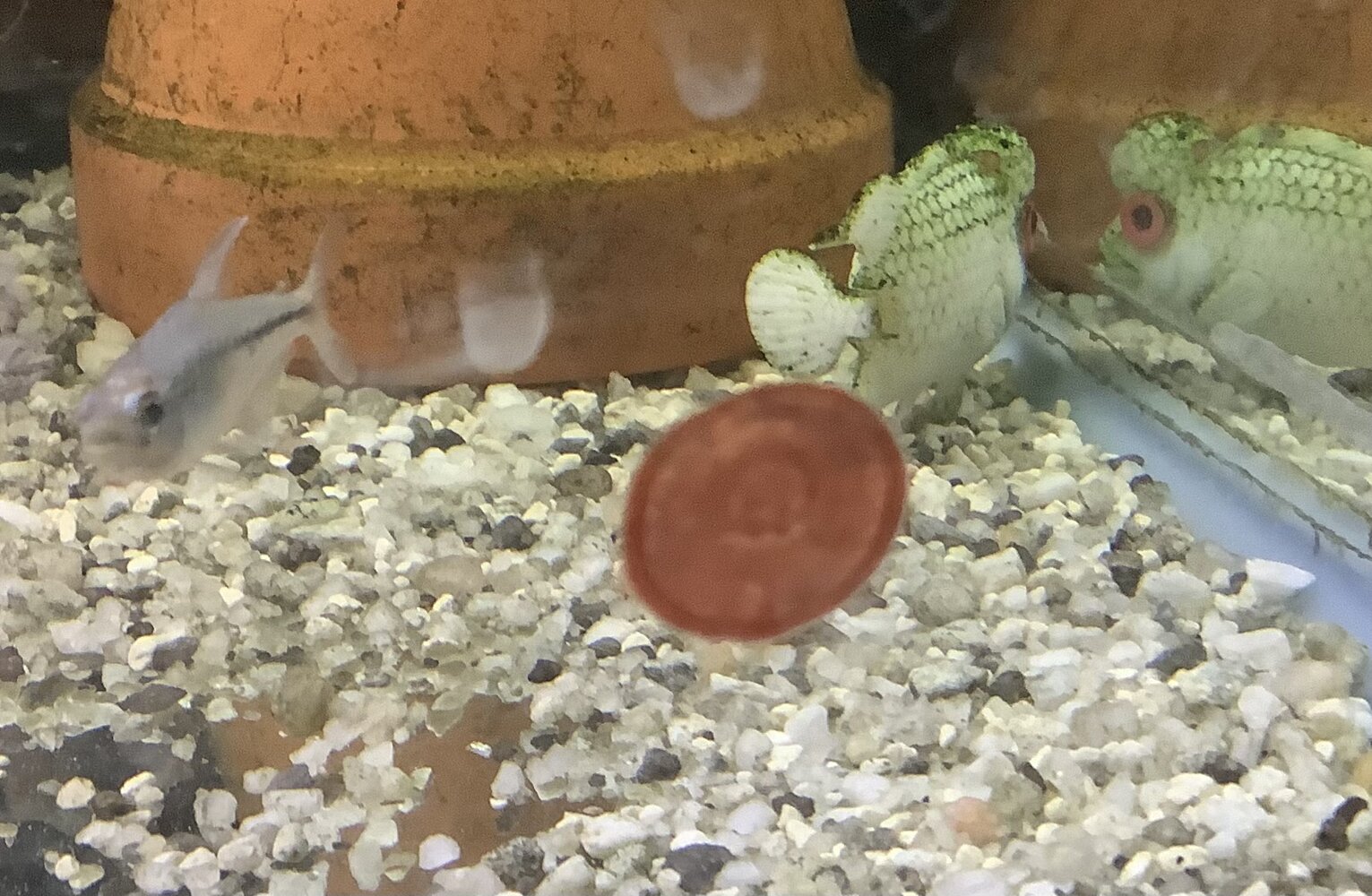It started on the surface of a clay pot and spread over onto the heater glass and elsewhere like rashes. These red circular rings are smooth to touch and cannot be rubbed away easily. Are they inorganic or biological in nature. What are they.
-
You are viewing the forum as a Guest, please login (you can use your Facebook, Twitter, Google or Microsoft account to login) or register using this link: Log in or Sign Up
You are using an out of date browser. It may not display this or other websites correctly.
You should upgrade or use an alternative browser.
You should upgrade or use an alternative browser.
Mysterious red ring stain
- Thread starter tiger15
- Start date
You may be correct. From my research, there is only one species that lives in freshwater. While it is desirable in reef tank, not in my freshwater tank as the stains are out of place and hard to remove.Coraline algae? I've seen them in reef tanks but not freshwater.
Hi all,
Personally <"I really like like it">, and I wish any of these would grow for me <"Thorea Hispida - I think??"> & <"Plant (?) identification - NAME FOUND - Caloglossa!">
Have a look at @EA James <"Deficiency or Algae?"> how nice is that?

cheers Darrel
It is an encrusting Red Algae (Hildenbrandia) <"Large Dark Red Spots">, but I don't think it is calcified.Coraline algae?
Personally <"I really like like it">, and I wish any of these would grow for me <"Thorea Hispida - I think??"> & <"Plant (?) identification - NAME FOUND - Caloglossa!">
Have a look at @EA James <"Deficiency or Algae?"> how nice is that?
cheers Darrel
Last edited:
If it is indeed Coraline algae, it is a mystery why a rare freshwater form would grow in my dim light, non planted, non dosing tank where no other algae can grow. Coraline algae is loved in a reef tank giving live rock color, but looks dirty staining my heater, glass and ornaments. The stain is permanent on rough surfaces and can only be removed by razer blade on smooth surfaces.
It thrives in low light.
Hi all,
I think the Coralline Algae (I've never seen the freshwater one) are all more pink, probably because the white calcium carbonate (CaCO3) masking the red pigments.

Habitus of Pneophyllum cetinaensis. Holotype (PC0145164) (a). Typically, P. cetinaensis develops as a crust on cobbles and pebbles (b,c). Extensive coverage in a shaded, shallow area in the type locality (d) where most gastropods are overgrown by P. cetinaensis, commonly with reproductive structures (arrow) (e).Uploaded a work by A. Žuljević, S. Kaleb, V. Peña, M. Despalatović, I. Cvitković, O. De Clerck, L. Le Gall, A. Falace, F. Vita, Juan C. Braga & B. Antolić from Figure 2 | Scientific Reports with UploadWizard
cheers Darrel
I think it is an encrusting Red Algae (Rhodophyta), but not the coralline one <"Pneophyllum cetinaensis - Wikipedia">, below.If it is indeed Coraline algae,
I think the Coralline Algae (I've never seen the freshwater one) are all more pink, probably because the white calcium carbonate (CaCO3) masking the red pigments.
Habitus of Pneophyllum cetinaensis. Holotype (PC0145164) (a). Typically, P. cetinaensis develops as a crust on cobbles and pebbles (b,c). Extensive coverage in a shaded, shallow area in the type locality (d) where most gastropods are overgrown by P. cetinaensis, commonly with reproductive structures (arrow) (e).Uploaded a work by A. Žuljević, S. Kaleb, V. Peña, M. Despalatović, I. Cvitković, O. De Clerck, L. Le Gall, A. Falace, F. Vita, Juan C. Braga & B. Antolić from Figure 2 | Scientific Reports with UploadWizard
cheers Darrel
According to Wikepedia, rubra is a marine species. Its the other freshwater Hildenbrandia species. It said that it can tolerate severe desiccation. I just returned a stained flower pots after months of drying and curious to l see if the algae will revive.I have many on my rocks in my 15 year old tank. Noticed some spots under my sand substrate too.
Researching more it is called Hildenbrandia Rubra.
The freshwater species H. rivularis[6] and H. angularis[7] seems to form a clade,[10] and require an alkaline pH and hard water, preferring clean water.[11] Unlike most other freshwater red algae (which prefer running water), H. rivularis prefers still water, particularly shady lakes or ponds.[11] H. rubra and other marine species are found in brackish waters, but freshwater / gemma-bearing species cannot tolerate even moderate salinities.[12] The genus is often found in a symbiotic partnership with fungi.[13] Hildenbrandia has a remarkable tolerance to stresses including extreme temperatures, desiccation, and Ultra-violet light; it can be up and photosynthesizing near full capacity just minutes after being cooled to −17 °C or subjected to extreme salinities.[14]




